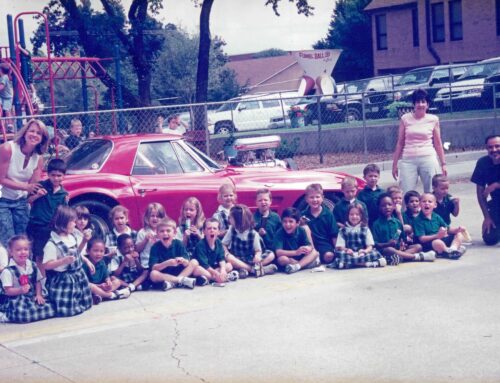Pulling up to the house at 4523 Junius, Tracy Venegas climbs out of her pick-up and hurries toward the front steps. Her hustled pace is not brusque, but resolute, the first indication that she is a woman on a mission.
As she unlocks the front door, Venegas explains that the Craftsman structure had been a “problem property” in Peak’s Suburban Addition. Glancing at the current façade with its newly built two-story porch conveys otherwise. The house stands out as a beautiful example of early 20th century architecture — a tribute to the historic district in which it sits.
It’s hard to imagine the house was once a neighborhood eyesore, operating mostly as a four-plex from 1914 until 2001, when the City of Dallas ordered the owners to stop using it as such, and shut down three of the four electric meters. After foreclosure, the house sat vacant and neglected for two years.
It was then that it found its way to Venegas and her husband, Miguel, who by that time had built a reputation for themselves after rehabilitating four properties in the 4600 block of Gaston that were once occupied by pigeons, vagrants and drug dealers. As Realtor Suzanne Athey pointed out when she nominated the Venegases for a Preservation Dallas award: “Where just a year and a half ago it was reported that crack cocaine was sold, a representative for a large pharmaceutical company now peddles her wares.”
When the Venegases purchased 4523 Junius, its doors and windows were boarded up, and major changes were needed to turn the four apartment units into a single-family home reflective of its period. To do this, Venegas approached the project like she approaches all of her historic projects — by beginning at the beginning.
This means poring over Dallas archives to discover when each house was built and details about the original structure, researching old Sanborn fire insurance maps to determine the house’s building materials and specs, studying photographs of homes constructed during the same period, and even contacting people who may have lived in or around the house over the course of its existence.
For the house on Junius, Venegas’ extensive research led to installing butler’s pantry doors from another 1913 Craftsman, and adding pocket doors salvaged from another Peak’s Suburban Addition home. She even tracked down the grandson of the original owner, who confirmed that the house had a two-story front porch before being altered.
Going to all that trouble would be a huge task for any contractor, but Venegas isn’t just any contractor. In fact, she has no formal training in the craft she has pursued for nearly 10 years now.
“This was purely accidental; I’m not kidding you,” Venegas says. “We never knew we were good at this.”
The first house the Venegases ever tackled was her brother-in-law’s place, fixing it up simply to help him bring it up to city codes. That led to another project, a prairie-style home on Reiger in Junius Heights. It had been converted to a five-plex in the ’60s and was badly abused by tenants until the ’90s, when it was left to rot. The Venegases were simply planning to repair the kitchen’s foundation for the owner, but somehow in the process wound up buying the house and restoring it to a single-family home — then moving in.
“From the early to mid-’90s we were buying stuff up kind of on spec,” Venegas says. “We got started to the point of no return.”
Though their present occupation happened by accident, it was her interest in American history that drew Venegas to this type of work. She holds a master’s degree in American studies from Virginia’s College of William and Mary, and she has completed all but her doctoral dissertation in American history at the same university.
An inherent love of old houses propels her, too. As a young woman, whenever Venegas drove past an abandoned home, she would pull over and explore it. Venegas remembers one in particular on the way to Round Rock that had a spiral staircase, bay windows and wainscoting. It has since disappeared, and that pains her. Nothing, in her view, warrants tearing a house down.
“If it’s still standing, you can fix it, even if it’s severely compromised,” Venegas insists.
She adds that she repeated this mantra ad nauseum during the fight over the Baldwin House at 6015 Bryan Parkway, which Preservation Dallas and neighborhood residents saved from a demolition order. Venegas is now helping Preservation Dallas to make the house structurally sound.
She took the same can-do attitude toward a four-plex at 4829 Swiss. The city had filed suit against the owner because the structure was, in Venegas’ words, “such a dump” — faulty foundation, leaning pillars, unstable stairs, exposed wiring, and that was just the tip of the iceberg. The owner tried to hire the Venegases to simply bring the property up to code, but they rejected his offer. Instead, they worked with two other investors to buy the house and completely rehabilitate it.
“It could have been condemned, it could have been knocked down, and nobody would have laid in front of the tractor. She saved it,” says Realtor Don Thompson, one of the investors on the project. “Her passion is keeping houses from falling down. And as far as history, she’s all over it. She knows what she’s doing.”
Venegas’ goal is to take each house apart and “build it back like it was.” That can mean repairing an antique tub or doorknobs and placing them right in the spot where they were found, but she also gets creative with the “leftovers,” such as the piece of the Swiss home’s original back porch that now adorns the ceiling of its master bath. Or the stair treads in the Junius home that were removed to facilitate the new staircase design, and then refashioned as bits and pieces of the kitchen cabinetry. In another property on Tremont, the Venegases tore out the crumbling fireplaces, but cleaned each and every one of the 5,000 antique chimney bricks, using them to create front porch pillars and a brick walkway. Nothing historic that can be salvaged goes to waste when Venegas is on the job, and that’s part what makes her unique, say neighborhood preservationists. That, and her fearless mindset.
“She is willing to take on those projects that other people shy away from, whether a house is in really bad shape or if it’s in a bad part of the neighborhood. For some reason, she has the gumption to go in and fix those types of places up,” says Mark Doty, a City of Dallas senior planner in historic preservation.
Most contractors and developers are willing to work within historic district guidelines, Doty says, but not all have the ability, and even fewer will give the time that these painstaking projects require.
“She doesn’t go in trying to look for the quick fix,” Doty says of Venegas. “She’s willing to take the time to do it right and make sure it is a quality product when she’s finished.”
That’s one major reason she has been nominated for so many Preservation Dallas awards (she has won three). But just because she takes her time doesn’t mean she has a lot of it on her hands. Venegas is usually juggling two or three projects at once, and with so many houses still left to restore, she doesn’t slow down. But her passion for the projects energizes her.
“There’s a creative element to this. You have to envision how all the parts go together,” Venegas says. “I just absolutely love making something beautiful out of these things.”
She recently took on her 16th project in our neighborhood historic districts. Perhaps someday Venegas will finish her dissertation, but for now, she believes it’s in the best position it can be — tucked away in various nooks and crannies around Junius Heights, Peak’s Suburban and Munger Place.
—————————————————————
SIDEBAR: A COMMON CAUSE
Tracy and Miguel Venegas aren’t the only neighbors dedicated to preserving the integrity of our historic homes. Here are three others working to make sure these structures’ distinct characteristics don’t become a thing of the past.
David Chandler
It’s not his day job. David Chandler is actually a business owner who likes to do remodeling work on the side. But his most recent project, a 12-plex at 4829 Bryan, earned him a Preservation Dallas award for renovating a multi-family residential property. “It was originally an apartment complex, and we basically put it back like it was and then some,” Chandler says. The boarded up building wasn’t on the market, but he talked its owner into selling the 1928 structure, then proceeded to restore and refurbish the art deco features reflective of the building’s period. The hardwoods were refinished, the kitchen tiles shined to a sparkle, and the appliances modernized. It’s not the only piece of neighborhood history to which Chandler is connected. He also bought a 1899 building on Main Street “in 1993 before it was trendy,” he says, and now lives and runs his businesses in the spot that once acted as the East Dallas relay station for telegraphs.
Jackie Staley
Two Victorian homes built in the late 1880s were in danger of being knocked down. One was on the city’s demolition list; the other was owned by an Uptown restaurateur who wanted the land for a parking lot. Preservation Dallas agreed to put both of them onto loading beams and haul them to Reiger, where Peak’s Suburban resident Jackie Staley brought them back to life. She also rebuilds L-shaped porches that have been removed, restores period kitchens and carriage houses, and says she can do “almost anything in the world” to an exterior. “I like anything that has to do with taking an old house and making it look wonderful,” Staley says. “I just love it. I can’t help myself.” Her latest project is a window trim that “greens up” older homes. It’s a city- and Landmark Commission-approved contraption that acts as a storm window, keeping heat, cold and noise from leaking in through the sought-after wavy glass on historic panes.
Jeff Van Buskirk
Munger Place contains 236 houses, and Jeff Van Buskirk says he’s probably been in every single one, plus worked on at least 80 of them. He and his wife live in an arts and crafts home that Van Buskirk’s grandfather-in-law bought in 1939 “for pennies on the dollar compared to today,” he says. The Van Buskirks purchased the home intending to fix it up and sell it, but that fix-up job turned into more jobs — building a kitchen cabinet here and redoing a bathroom there. He stayed put, and 15 years later, residents of the historic and conservation districts are still calling him to create custom moldings for their door jams and “put some new fronts on Tudors to make them look more Tudor-y,” he says. But Van Buskirk has also delved into some much larger projects, like the new-old Munger Place home that recently garnered him a Preservation Dallas award.





